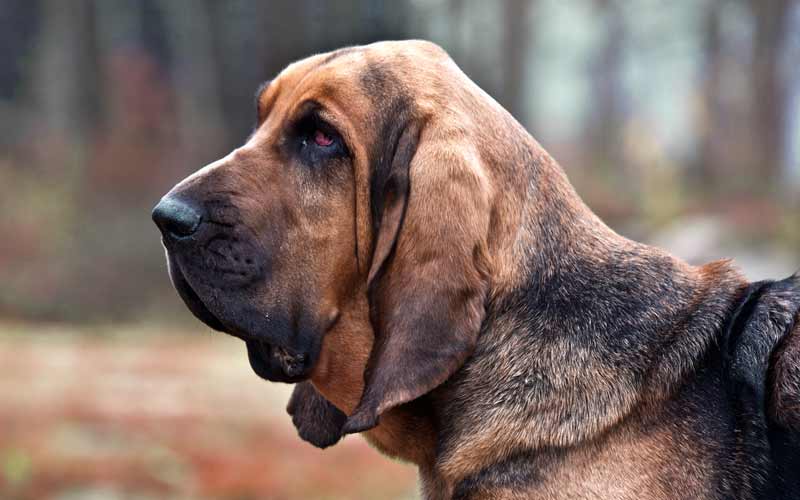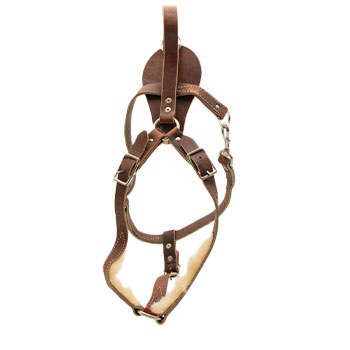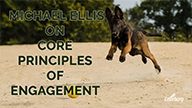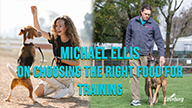Bloodhounds: The Myth and Fiction About Their Tracking Abilities

When the average civilian thinks of a tracking dog they picture a bloodhound for one reason: the media. Just as people think of German Shepherds as police dogs the same people think of bloodhounds as trackers. I disagree with the credit this breed is given for its scenting ability, especially when compared to other working dogs. I am not a fan of undeserved repudiations or bad police work, which is why I also don't agree with the claims that many bloodhound handlers (not all) make concerning the scenting ability of this breed of dogs.
Before I wrote this article, I talked with a number of friends who are police K9 instructors in North America and Europe. I consider these men experts in the field of training police tracking dogs. I have spent time at the RCMP police dog school in Innesfail Alberta (the finest police tracking school in North America) and at both federal police dog schools in Holland (Rotterdam and Nunspeet). To a man, the men I have talked with agree with what I am going to write in this article.
Let me begin by saying that I am not claiming that Bloodhounds cannot track. A well-trained bloodhound that has good drive can track just as well as any other breed of working dog. What I am saying is that just because they are bloodhounds does not mean that they can track. Too many beginners (and department administrators) in this business miss that point. They don't understand that "drive, nerves, and desire" play a very important part in a dog's ability to be trained to follow a track. In addition, bloodhounds cannot perform the superhuman feats that many inexperienced bloodhound handlers claim they can.
For example:
- They cannot follow tracks any better than any other good tracking dog.
- They cannot consistently use a scent article to pick up a track and follow it.
- They cannot follow tracks on concrete that are a couple of days old in a downtown metropolitan area.
- They cannot follow people who have gotten into cars and driven down the highway.
- Bloodhounds cannot smell human blood or human urine and then scent discriminates that person from a lineup.
- They also cannot follow a track that is a couple of hours old and then pick the person they were following from a lineup.
I am attaching a copy of a handout, (see the end of this article), that a local bloodhound handler passed out to sheriff's deputies in his department. This document is typical of the claims made by bloodhound handlers. It is also a clear indication of a lack of understanding of the law, a lack of understanding of proven scientific evidence of a dog's scenting abilities, and a lack of understanding of safe tactics. I will use this document as an example of the problems I have with a large number (again not all) of bloodhound handlers in this country.
The opening statement of this document is misleading. It indicates that a trained bloodhound has the ability to smell human scent left on an object and then pick this scent from a group of tracks. In other words, this bloodhound handler and many others like him, claim that at the beginning of a track a bloodhound can scent discriminate one track from a group of tracks. Neither I nor any of the tracking instructors I talked to believe that any breed of dog can do this. My Dutch friend (Simon Prins) calls this mission impossible.
From a legal standpoint, there are holes in the theory of using scent articles. If the handler wanted to use his dog as evidence in a court he would have to demonstrate, through training records, that he started every training track with a scent article. This would not be a problem if he actually did this. His training would have to include cases where the dog was given scent from an article and NO TRACK leads away from the scene. This proves the negative aspect of the dog's ability to select the correct track and make a decision.
Another problem arises when there is no scent article at a scene. How can that handler then show through training records that his dog found the correct track? The answer is, he cannot.
Every track has its own characteristics, we call this a track picture. It takes most dogs 50 to 100 yards of following a track to lock on to the track picture of a particular track. Once a trained dog has locked onto a track many can then scent discriminate that track picture from others. Some dogs are better at this than others. But no dog that I have ever seen can consistently scent objects and then pick that track from a group of tracks.
Item one on this document, while it does not relate specifically to Bloodhounds, is a concern. It recommends backup officers stay 20 yards behind the handler. In felony situations, this is too far back. When things turn bad a Bloodhound is not going to protect his handler. If things turn bad and the handler runs up on a man with a gun or even a knife, backup needs to be right behind the handler where he can do the most good.
Lines 3 and 5 and 8 are referring to scent articles. I have already gone through my opinions on this. But in line 8, this handler refers to a footprint as a scent article. It is not a scent article, a footprint is a track. It would not take a smart defense attorney very long to twist things around and make this handler look like he did not understand what he was talking about.
A human scent picture is a combination of skin grafts that naturally flake off the body combined with the scent from footwear and the scent left from a person crushing ground vegetation as he or she steps on it. Dogs can distinguish between tracks left by people of different weights. (The Germans have done experiments to confirm this effect). There is no documented scientific evidence that human blood or human urine has individual scent characteristics, nor has there ever been a study of this. Yes, it would add to the scent picture, but there is no evidence that the smell of blood is unique to each person. Therefore, to say that Bloodhounds can use blood and urine as scent articles blows gaping holes in credibility for potential court testimony.
Scent identification, in its simplest form, is the term used when a dog is allowed to smell an object and then identify that human scent on that object by indicating on a second article which contains the same scent. This second article is picked from a lineup of identical articles. The Dutch have worked on scent discrimination for years and are considered the leaders in this field. I have written articles on my website about their work. The science behind the Dutch training has been confirmed by Dr. Adee Schoon. Dr. Schoon did her PhD thesis on a dog's ability to scent discriminate. She is the person responsible for getting the Dutch courts to accept evidence on a trained dog's ability to scent discriminate. I have an English copy of Dr. Shoon's thesis (sorry I cannot hand out copies, it is too thick). Her conclusions are based on solid scientific experiments, not seat-of-the-pants guesses, which is what bloodhound handlers base many of their claims on. The Dutch have proven that the scent from human hands is different than the scent from the body of a human. So where does this leave the bloodhound people with their scent articles? I don't know.
What the Dutch have found is that not every dog can scent discriminate. They have also found that many dogs make excellent tracking dogs, but the same dog will not do well in scent discrimination. So the Dutch do not use the same dogs to track and do scent discrimination. The interesting thing is that Bloodhound Association expects every one of their bloodhounds to scent-discriminate to get certified by their organization. Who knows, maybe they have reinvented the wheel.
Now let's talk about the law. The fact is that tracking evidence has a miserable track record in a number of state courts, (in many cases because of poor police work and false claims). The state of Minnesota does not accept tracking evidence. The state of Illinois has a case law that holds Bloodhounds as unreliable. Indiana says that evidence is too uncertain, Iowa calls it weak and uncertain, Montana goes further and calls it "incompetent" and Nebraska calls it "unsafe."
In the attached document the handler continually refers to concerns about protecting the scent, concerns about contaminating the scent with flares and auto imitations. The problem with this is that any expert knows that we cannot mask scent. Once scent is there, we are not going to take it away. The wind may blow it away, the sun may burn it up but nothing we do at the scene is going to take it away. We may add additional scents to it but a good dog is going to be able to track through the problems once he has acquired the scent picture. To write these things down only gives defense attorneys ammunition to attack and distort a handler's testimony. The name of the game is to throw doubt upon the jury.
Any law enforcement officers should question the claims that are made by bloodhound tracking dog handlers. Once again, we are not saying they cannot track, we are saying they cannot be selective about the people they track. If a dog is placed on a track and demonstrates (through training records) that it will stay on that specific track, then dogs are capable of some pretty amazing things. But being able to run lineups and follow cars is crazy.








Ask Cindy.